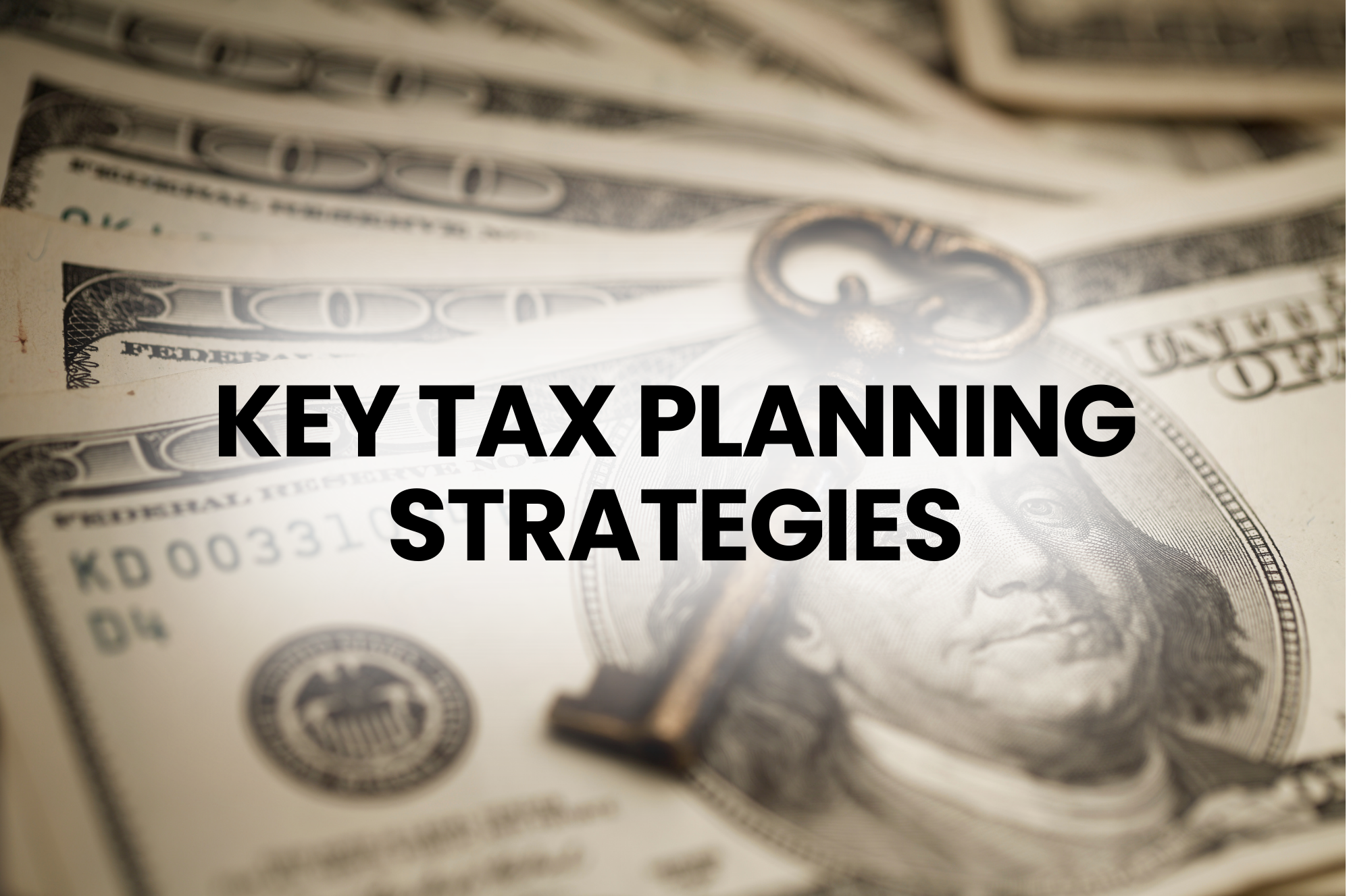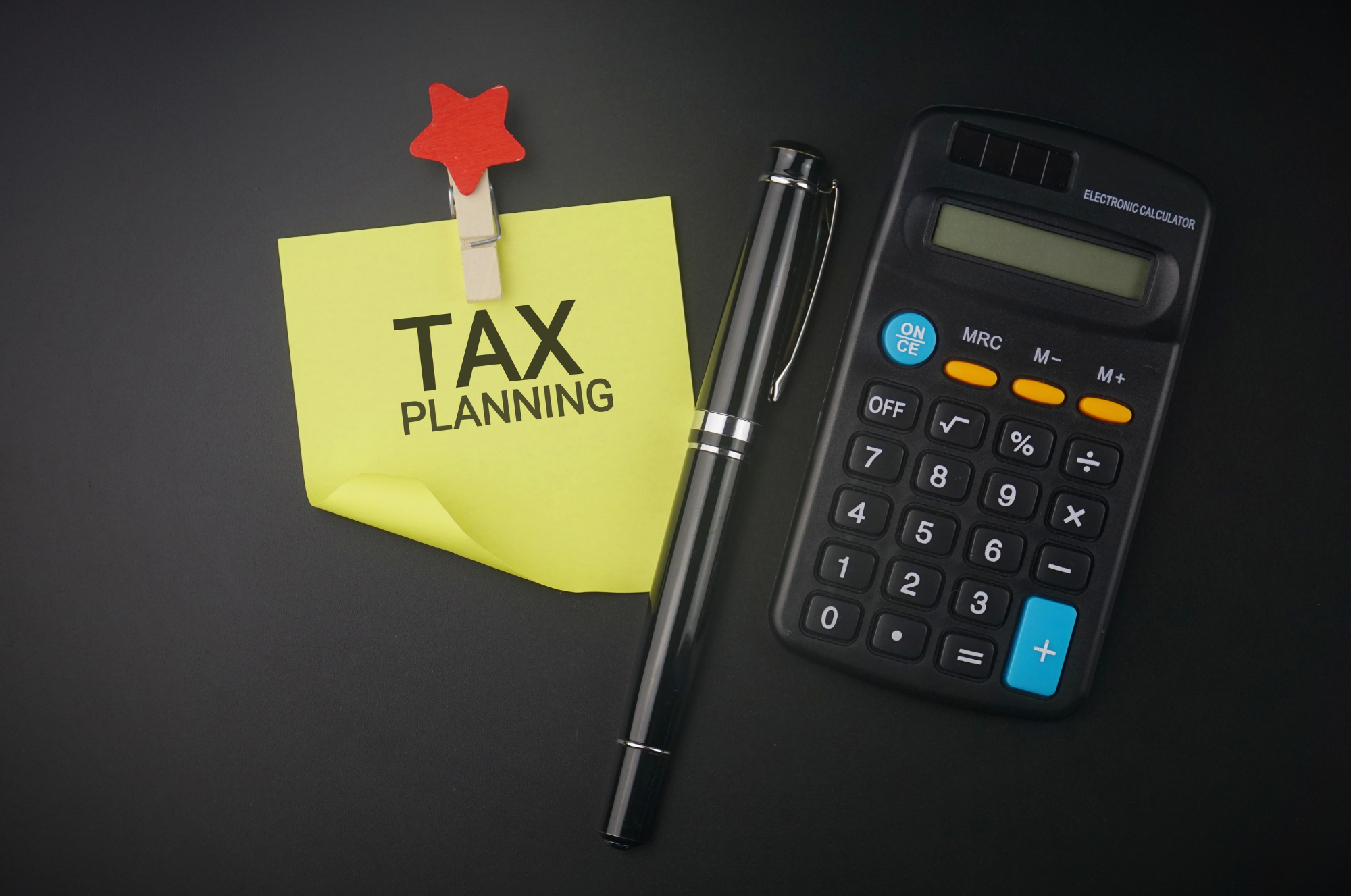Unlock Massive Savings: Tax Planning Strategies That Could Save You Thousands in 2025
As we approach the end of 2024 and look ahead to 2025, it’s crucial to consider tax planning strategies that could save you thousands. With potential changes in tax laws on the horizon and the ever-evolving financial landscape, understanding and implementing effective tax planning techniques has never been more important. This comprehensive guide will explore various strategies to help you optimize your tax situation and potentially keep more money in your pocket.
Introduction
Tax planning is an essential aspect of financial management that often goes overlooked by many individuals and businesses. However, with the right approach, tax planning strategies could save you thousands of dollars each year. As we stand at the cusp of 2025, it’s more critical than ever to be proactive about your tax situation.
The importance of tax planning cannot be overstated. It’s not just about reducing your tax burden; it’s about making informed financial decisions that align with your long-term goals. Effective tax planning can lead to significant savings, allowing you to allocate more resources towards investments, retirement, or other financial priorities.
In this article, we’ll delve into a wide range of tax planning strategies that could potentially save you thousands. We’ll cover everything from maximizing retirement account contributions to exploring business tax deductions. Whether you’re a high-income earner, a small business owner, or somewhere in between, you’ll find valuable insights to help optimize your tax situation.
Understanding Tax Planning

Before we dive into specific strategies, it’s essential to understand what tax planning entails and why it’s so crucial.
What is Tax Planning?
Tax planning is the analysis of a financial situation or plan from a tax perspective. It’s the process of arranging your affairs in ways that defer or reduce your tax liability. Effective tax planning involves considering the tax implications of individual, investment, or business decisions, usually with the goal of minimizing tax liability.
Tax planning is a year-round process, not just something you do when it’s time to file your tax return. It involves understanding how various tax laws apply to your situation and making strategic decisions to optimize your tax position.
Why is Tax Planning Important?
Tax planning is important for several reasons:
- Reduces Tax Liability: The most obvious benefit of tax planning is that it can help reduce the amount of taxes you owe. By taking advantage of all the deductions and credits you’re eligible for, you can lower your taxable income and, consequently, your tax bill.
- Increases Savings: When you pay less in taxes, you have more money to save or invest. Over time, this can significantly impact your financial health and wealth accumulation.
- Helps in Financial Decision Making: Understanding the tax implications of various financial decisions can help you make more informed choices about investments, business operations, and personal finance.
- Ensures Compliance: Proper tax planning helps ensure that you’re complying with all relevant tax laws and regulations, reducing the risk of audits or penalties.
- Supports Long-Term Financial Goals: By optimizing your tax situation, you can allocate more resources towards your long-term financial goals, such as retirement savings or education funding.
The Difference Between Tax Evasion and Tax Avoidance
It’s crucial to understand the distinction between tax evasion and tax avoidance. Tax evasion is illegal and involves deliberately misrepresenting or concealing information to reduce tax liability. On the other hand, tax avoidance is perfectly legal and involves using tax laws to your advantage to minimize your tax burden.
Tax planning falls under the category of tax avoidance. It’s about understanding the tax code and using legal methods to reduce your tax liability. Always ensure that your tax planning strategies are within the bounds of the law.
For more information on the difference between tax evasion and tax avoidance, you can refer to the IRS website.
In the next sections, we’ll explore specific tax planning strategies that could save you thousands as we move into 2025. These strategies are designed to help you legally minimize your tax burden while maximizing your financial potential.
Key Tax Planning Strategies That Could Save You Thousands

As we approach 2025, it’s crucial to be aware of the most effective tax planning strategies that could potentially save you thousands of dollars. Let’s explore these strategies in detail.
1. Maximize Retirement Account Contributions
One of the most powerful tax planning strategies is maximizing your contributions to retirement accounts. These accounts offer significant tax advantages that can lead to substantial savings.
Traditional IRA and 401(k) Contributions
Contributions to traditional IRAs and 401(k)s are made with pre-tax dollars, reducing your taxable income for the year. As of 2024, the contribution limits are:
- 401(k): $23,000 (with an additional $7,500 catch-up contribution for those 50 and older)
- IRA: $7,000 (with an additional $1,000 catch-up contribution for those 50 and older)
Example: If you’re in the 24% tax bracket and max out your 401(k) contribution at $23,000, you could save $5,520 in taxes for the year.
Roth IRA and Roth 401(k) Options
While Roth contributions don’t offer immediate tax savings, they provide tax-free growth and withdrawals in retirement. This can be particularly beneficial if you expect to be in a higher tax bracket in retirement.
Catch-up Contributions for Those 50 and Older
If you’re 50 or older, take advantage of catch-up contributions. These allow you to contribute an additional amount to your retirement accounts, potentially saving even more on taxes.
For more information on retirement account contribution limits, visit the IRS Retirement Topics page.
2. Take Advantage of Tax-Advantaged Accounts
Beyond retirement accounts, there are other tax-advantaged accounts that can help you save money on taxes.
Health Savings Accounts (HSAs)
HSAs offer a triple tax advantage:
- Contributions are tax-deductible
- Growth is tax-free
- Withdrawals for qualified medical expenses are tax-free
For 2024, the contribution limits are:
- Individual: $3,850
- Family: $7,750
- Catch-up contribution (age 55+): Additional $1,000
Flexible Spending Accounts (FSAs)
FSAs allow you to set aside pre-tax dollars for medical or dependent care expenses. The 2024 contribution limit for healthcare FSAs is $3,050.
529 College Savings Plans
While contributions to 529 plans are not federally tax-deductible, many states offer tax deductions or credits for contributions. The earnings grow tax-free, and withdrawals for qualified education expenses are tax-free.
3. Optimize Your Charitable Giving
Strategic charitable giving can not only support causes you care about but also provide significant tax benefits.
Bunching Charitable Donations
Consider “bunching” your charitable donations by making larger donations every other year instead of smaller annual donations. This strategy can help you exceed the standard deduction threshold and itemize your deductions in alternating years.
Donor-Advised Funds
Donor-advised funds allow you to make a large charitable contribution in one year (and take the tax deduction), while spreading out the actual charitable gifts over time.
Qualified Charitable Distributions (QCDs) for Retirees
If you’re 70½ or older, you can make tax-free charitable donations directly from your IRA. This can satisfy your required minimum distribution (RMD) without increasing your taxable income.
For more information on charitable giving strategies, check out the National Philanthropic Trust’s resource page.
By implementing these strategies, you could potentially save thousands on your taxes as we move into 2025. Remember, tax laws can change, so it’s important to stay informed and consult with a tax professional for personalized advice.
4. Implement Tax-Loss Harvesting
Tax-loss harvesting is a sophisticated strategy that can help reduce your tax liability, particularly for investors with taxable investment accounts.
How it works
Tax-loss harvesting involves selling investments that have declined in value to realize a capital loss. This loss can then be used to offset capital gains from other investments or up to $3,000 of ordinary income per year.
When to use it
Tax-loss harvesting is most effective:
- During market downturns
- When you have significant capital gains in a given year
- As part of your year-end tax planning strategy
Avoiding wash sale rules
Be cautious of the “wash sale” rule, which prohibits claiming a loss on a security if you buy the same or a “substantially identical” security within 30 days before or after the sale. To avoid this:
- Wait at least 31 days before repurchasing the same security
- Consider buying a similar but not identical security to maintain your investment strategy
For more detailed information on tax-loss harvesting, visit the Investor.gov page on the topic.
5. Consider Roth Conversions
As we approach 2025, Roth conversions remain a powerful tax planning strategy that could save you thousands in the long run.
Benefits of Roth conversions
- Tax-free growth and withdrawals in retirement
- No required minimum distributions (RMDs)
- Potential tax savings if you expect to be in a higher tax bracket in retirement
When it makes sense to convert
Roth conversions can be particularly beneficial:
- In years when your income is lower than usual
- If you believe tax rates will increase in the future
- When you want to diversify your tax exposure in retirement
Tax implications of conversions
Remember that Roth conversions are taxable events. The amount you convert is added to your taxable income for the year. It’s crucial to plan carefully to avoid pushing yourself into a higher tax bracket.
6. Utilize Tax Credits
Tax credits are among the most powerful tools in your tax-saving arsenal, as they directly reduce your tax bill dollar-for-dollar.
Child Tax Credit
For 2024, the Child Tax Credit remains at $2,000 per qualifying child under 17. Up to $1,500 of this credit is refundable.
Earned Income Tax Credit (EITC)
The EITC is a refundable credit for low to moderate-income workers. For 2024, the maximum credit ranges from $600 (no qualifying children) to $7,430 (three or more qualifying children).
Education credits
- American Opportunity Tax Credit: Up to $2,500 per eligible student for the first four years of higher education
- Lifetime Learning Credit: Up to $2,000 per tax return for qualified education expenses
Energy-efficient home improvement credits
The Inflation Reduction Act of 2022 expanded and extended various energy-related tax credits. For example, the Residential Clean Energy Credit allows a credit of 30% for installing solar panels, wind turbines, or geothermal heat pumps.
For a comprehensive list of available tax credits, visit the IRS’s Credits & Deductions page.
7. Manage Capital Gains and Losses
Effective management of capital gains and losses can significantly impact your tax liability.
Long-term vs. short-term capital gains
- Long-term capital gains (assets held for more than a year) are taxed at preferential rates: 0%, 15%, or 20%, depending on your income
- Short-term capital gains (assets held for a year or less) are taxed as ordinary income
Strategies to minimize capital gains taxes
- Hold investments for more than a year to qualify for long-term capital gains rates
- Use the specific identification method when selling investments to minimize gains
- Consider investing in tax-efficient index funds or ETFs
Using capital losses to offset gains
Remember that capital losses can offset capital gains, and up to $3,000 of ordinary income per year. Any unused losses can be carried forward to future tax years.
By implementing these strategies, you could potentially save thousands on your taxes as we move into 2025. However, tax laws are complex and subject to change, so it’s always advisable to consult with a qualified tax professional for personalized advice.
8. Explore Business Tax Deductions
For small business owners and self-employed individuals, understanding and maximizing business tax deductions can lead to significant tax savings.
Home office deduction
If you use a portion of your home exclusively for your business, you may be eligible for the home office deduction. You can choose between two methods:
- Simplified method: Deduct $5 per square foot of your home office, up to 300 square feet (maximum deduction of $1,500)
- Regular method: Calculate the actual expenses of your home office, including mortgage interest, insurance, utilities, repairs, and depreciation
Vehicle expenses
If you use your vehicle for business purposes, you can deduct vehicle expenses using either:
- Standard mileage rate: For 2024, the rate is 67 cents per mile for business use
- Actual expense method: Track all vehicle-related expenses and deduct the business-use percentage
Business travel and meals
- Business travel expenses are fully deductible
- Business meals are 50% deductible in most cases, but 100% deductible for restaurant meals in 2024 (this provision is set to expire after 2024)
Self-employment tax deductions
Self-employed individuals can deduct:
- 50% of their self-employment tax
- Health insurance premiums
- Contributions to self-employed retirement plans (SEP IRA, Solo 401(k), etc.)
For more information on business deductions, refer to the IRS’s Business Expenses page.
9. Consider Tax-Efficient Investments
Choosing tax-efficient investments can help minimize your tax burden and potentially save you thousands over time.
Municipal bonds
Interest from municipal bonds is typically exempt from federal income tax and may also be exempt from state and local taxes if you live in the issuing state. This can make them particularly attractive for high-income earners in high-tax states.
Example: If you’re in the 35% federal tax bracket, a municipal bond yielding 3% would be equivalent to a taxable bond yielding 4.62% (3% / (1 – 0.35)).
Index funds and ETFs
Index funds and ETFs are generally more tax-efficient than actively managed funds because they have lower turnover, resulting in fewer capital gains distributions.
Tax-managed funds
These funds are specifically designed to minimize tax liability by using strategies such as:
- Harvesting tax losses
- Minimizing short-term capital gains
- Favoring qualified dividends over non-qualified dividends
10. Plan for Estate Taxes
While estate taxes may not affect everyone, proper planning can save your heirs significant amounts in taxes.
Annual gift tax exclusion
For 2024, you can give up to $18,000 per person per year without incurring gift tax or using your lifetime exemption. This is a simple way to reduce the size of your taxable estate over time.
Lifetime gift and estate tax exemption
As of 2024, the lifetime exemption is $13.61 million per individual. However, this is set to be reduced significantly in 2026 unless Congress acts to extend the current limits. Planning for this potential change is crucial.
Trusts and other estate planning tools
Various types of trusts can help minimize estate taxes:
- Irrevocable Life Insurance Trusts (ILITs)
- Grantor Retained Annuity Trusts (GRATs)
- Charitable Remainder Trusts (CRTs)
For more information on estate planning, visit the American Bar Association’s Estate Planning page.
Tax Planning Strategies for Different Income Levels

Tax planning strategies can vary significantly based on your income level. Let’s explore some strategies tailored to different income brackets.
Strategies for Low-Income Earners
- Claim the Earned Income Tax Credit (EITC): This refundable credit can provide significant benefits to low to moderate-income workers.
- Take advantage of the Saver’s Credit: This credit provides an additional incentive for low to moderate-income individuals to save for retirement.
- Maximize education credits: The American Opportunity Tax Credit and Lifetime Learning Credit can be particularly beneficial for low-income students or parents of students.
- Consider a Roth IRA: While contributions aren’t tax-deductible, the tax-free growth and withdrawals can be advantageous, especially if you expect to be in a higher tax bracket in the future.
Tax Planning for Middle-Income Individuals
- Maximize pre-tax retirement contributions: Contribute as much as possible to 401(k)s, traditional IRAs, or other pre-tax retirement accounts to reduce your taxable income.
- Take advantage of FSAs and HSAs: These accounts can provide significant tax savings for healthcare and dependent care expenses.
- Itemize deductions if they exceed the standard deduction: Keep track of deductible expenses like mortgage interest, state and local taxes, and charitable contributions.
- Consider tax-efficient investments: Look into index funds, ETFs, or municipal bonds for taxable investment accounts.
High-Income Earner Tax Strategies
- Maximize all available retirement accounts: This includes maxing out 401(k)s, backdoor Roth IRAs, and potentially setting up a Solo 401(k) or SEP IRA if you have self-employment income.
- Consider tax-loss harvesting: This strategy can help offset capital gains and reduce your tax liability.
- Explore charitable giving strategies: Donor-advised funds or qualified charitable distributions can provide tax benefits while supporting causes you care about.
- Look into tax-advantaged investments: Municipal bonds, opportunity zone funds, or 1031 exchanges for real estate investors can provide tax benefits.
- Plan for the Net Investment Income Tax (NIIT): High-income earners may be subject to an additional 3.8% tax on investment income. Strategies to manage this include spreading income over multiple years or increasing involvement in a business to qualify for the active participation exception.
For more detailed information on tax strategies for different income levels, you can refer to the Tax Policy Center’s resources.
Common Tax Planning Mistakes to Avoid

Even with the best intentions, it’s easy to make mistakes in tax planning. Here are some common pitfalls to avoid:
Overlooking Deductions and Credits
Many taxpayers miss out on valuable deductions and credits simply because they’re unaware of them. Some commonly overlooked items include:
- State sales tax deduction (if you itemize)
- Charitable contributions of goods and mileage
- Student loan interest deduction
- Child and Dependent Care Credit
Pro tip: Use a comprehensive tax preparation checklist or software to ensure you’re not missing any potential deductions or credits.
Poor Timing of Income and Expenses
The timing of when you receive income or incur expenses can significantly impact your tax liability. Common mistakes include:
- Failing to defer income to the next tax year when beneficial
- Not accelerating deductions into the current year when it would be advantageous
- Selling investments too soon and incurring short-term capital gains instead of long-term capital gains
Failing to Keep Accurate Records
Proper documentation is crucial for claiming deductions and credits. Common record-keeping mistakes include:
- Not keeping receipts for charitable donations
- Failing to log business mileage
- Not retaining documentation for business expenses
Best practice: Implement a system for organizing and storing tax-related documents throughout the year. Digital solutions like scanner apps can make this process easier.
When to Seek Professional Help with Tax Planning
While many individuals can handle basic tax preparation on their own, there are situations where professional help can be invaluable and potentially save you thousands.
Signs You Need a Tax Professional
- You’ve experienced a major life change (marriage, divorce, new child, etc.)
- You’ve started a business or have complex investments
- You’ve received an inheritance or large gift
- You’re planning for retirement or estate transfer
- You’re facing an IRS audit
How to Choose a Tax Advisor
When selecting a tax professional:
- Look for proper credentials (CPA, Enrolled Agent, or Tax Attorney)
- Check their experience with your specific tax situation
- Inquire about their continuing education practices
- Ask about their fee structure and availability throughout the year
- Check references and online reviews
Cost vs. Benefit of Professional Tax Planning
While hiring a tax professional comes with a cost, the potential savings can far outweigh the expense. Consider the following:
- A professional can often find deductions and credits you might miss
- They can help you avoid costly mistakes and potential audits
- Their expertise can lead to long-term tax savings strategies
Example: If a tax professional charges $500 for their services but saves you $3,000 in taxes through strategic planning, your net benefit is $2,500.
For more guidance on choosing a tax professional, visit the IRS’s Choose a Tax Professional page.
Tax Planning Throughout the Year

Effective tax planning is not a once-a-year activity but an ongoing process. Here’s how to approach it throughout the year:
Quarterly Tax Planning Check-ins
Set aside time each quarter to review your tax situation:
- Q1 (January-March): Review the previous year’s return and set goals for the current year
- Q2 (April-June): Assess your current year-to-date income and adjust withholdings or estimated tax payments if necessary
- Q3 (July-September): Start gathering documentation for potential deductions and credits
- Q4 (October-December): Implement year-end tax-saving strategies
Year-End Tax Planning Strategies
As the year comes to a close, consider these strategies:
- Accelerate deductions (e.g., make charitable contributions, pay property taxes early)
- Defer income if possible (e.g., delay year-end bonus to January)
- Harvest tax losses to offset capital gains
- Max out retirement account contributions
- Make energy-efficient home improvements to qualify for tax credits
Planning for Future Tax Law Changes
As we approach 2025, it’s crucial to be aware of potential tax law changes:
- The Tax Cuts and Jobs Act provisions are set to expire after 2025, which could lead to higher tax rates and lower standard deductions
- Estate tax exemptions may be reduced
- Various tax credits and deductions may be modified or eliminated
Pro tip: Stay informed about potential changes and work with a tax professional to develop flexible strategies that can adapt to changing tax laws.
Tools and Resources for Tax Planning

To effectively implement tax planning strategies that could save you thousands, it’s crucial to leverage the right tools and resources. Here’s an in-depth look at some of the most valuable resources available:
Tax Planning Software Options
- TurboTax Premier
- Offers a robust tax planning module
- Provides “what-if” scenarios to help you make informed decisions
- Includes investment and rental property tax tools
- Cost: Around $90 for federal and state filing
- H&R Block Deluxe + State
- Features a tax planning calculator
- Offers real-time tax refund display as you enter information
- Provides access to tax experts for an additional fee
- Cost: Approximately $55 for federal and state filing
- TaxAct Premier+
- Includes a tax planning calculator to project future tax liabilities
- Offers tools for self-employed individuals and investors
- Provides alerts for tax-saving opportunities
- Cost: About $70 for federal and state filing
- Drake Tax Planner
- Designed for tax professionals but available for individual use
- Allows for complex multi-year tax projections
- Offers detailed reports and comparisons
- Cost: Varies based on features and number of returns
IRS Resources and Publications
The Internal Revenue Service (IRS) offers a wealth of free resources to help with tax planning:
- Publication 17
- Comprehensive guide to preparing individual tax returns
- Covers all aspects of federal income tax filing
- Updated annually to reflect current tax laws
- Tax Withholding Estimator
- Helps determine the right amount of tax to withhold from your paycheck
- Useful for adjusting withholdings to avoid owing a large sum or getting a large refund
- Interactive Tax Assistant
- Provides answers to many tax law questions
- Covers topics like filing requirements, deductions, and credits
- IRS2Go Mobile App
- Check refund status
- Make payments
- Access tax records
Helpful Websites and Calculators
- Bankrate’s Tax Calculators
- Offers various calculators for different tax scenarios
- Includes calculators for capital gains, estate tax, and more
- Free to use
- SmartAsset’s Tax Return Calculator
- Estimates your tax refund or amount owed
- Factors in state-specific tax laws
- Provides a breakdown of your tax liability
- Nerdwallet’s Tax Estimator
- Helps estimate your tax liability
- Offers suggestions for tax-saving opportunities
- Free and easy to use
- TaxCaster by Intuit
- Free tax refund calculator
- Gives a quick estimate of your tax refund or amount owed
- Can be used without creating an account
- RSM’s Tax Planning Guide
- Comprehensive resource for tax planning strategies
- Updated annually with current tax laws and rates
- Offers insights for individuals and businesses
Professional Associations and Educational Resources
- American Institute of CPAs (AICPA)
- Offers tax planning resources and educational materials
- Provides a “Find a CPA” tool to locate tax professionals in your area
- National Association of Tax Professionals (NATP)
- Offers tax education and resources for both professionals and the public
- Provides a directory of tax professionals
- Offers tax education and resources for both professionals and the public
- Tax Foundation
- Offers research and analysis on tax policies
- Provides state-by-state tax data and comparisons
- Coursera’s Personal & Family Financial Planning Specialization
- Offers courses on financial planning, including tax strategies
- Taught by University of Florida faculty
- Can be audited for free or completed for a certificate (fee required)
Government Resources Beyond the IRS
- USA.gov’s Tax Section
- Provides links to various tax-related resources
- Offers information on federal, state, and local taxes
- Social Security Administration’s Benefits Planner
- Helps estimate how Social Security benefits may be taxed
- Useful for retirement tax planning
- U.S. Securities and Exchange Commission’s Investor.gov
- Offers educational resources on investing and its tax implications
- Provides calculators for various financial scenarios
Industry-Specific Resources
- National Association of Realtors’ Tax Resources
- Offers tax information specific to real estate transactions
- Useful for homeowners and real estate investors
- Small Business Administration’s Tax Guide
- Provides tax information and resources for small business owners
- Offers guidance on business deductions and credits
- American Bar Association’s Taxation Section
- Offers resources and publications on tax law
- Useful for those dealing with complex tax situations
Podcasts and Blogs
- Taxgirl Podcast
- Hosted by tax attorney Kelly Phillips Erb
- Covers current tax news and planning strategies
- The Real Estate CPA Podcast
- Focuses on tax strategies for real estate investors
- Covers topics like cost segregation, 1031 exchanges, and more
- Don’t Mess With Taxes Blog
- Written by tax journalist Kay Bell
- Offers timely tax news and advice
Tax Planning Apps
- Quickbooks Self-Employed
- Helps track expenses and estimate quarterly taxes
- Useful for freelancers and small business owners
- Cost: Starts at $15/month
- Everlance
- Automatically tracks mileage and expenses
- Generates IRS-compliant reports
- Cost: Free version available, premium starts at $8/month
- Taxbot
- Tracks expenses and mileage
- Provides tax education resources
- Cost: Starts at $9.99/month
By leveraging these tools and resources, you can enhance your tax planning efforts and potentially save thousands. Remember, while these resources are valuable, they should be used in conjunction with professional advice for your specific situation.
Pro Tip: Many of these resources offer free trials or basic versions. Take advantage of these to test different tools and find the ones that work best for your needs.
Case Studies: Real-Life Tax Planning Success Stories
Let’s delve deeper into real-life examples of how effective tax planning strategies could save you thousands. These case studies illustrate the potential impact of implementing various tax strategies.
Case Study 1: How a Family Saved $5,000 Through Strategic Tax Planning

The Johnson family, consisting of John (42), Sarah (40), and their two children aged 10 and 8, have a combined household income of $120,000. Here’s a detailed breakdown of how they implemented tax planning strategies to save $5,000:
- Maximized 401(k) contributions:
- John contributed $19,500 to his employer-sponsored 401(k) plan
- Tax savings: $4,290 (22% marginal tax rate)
- HSA contributions:
- The family contributed $7,200 to their Health Savings Account
- Tax savings: $1,584 (22% marginal tax rate)
- Child Tax Credit:
- Claimed $2,000 per child for a total of $4,000
- Charitable contributions:
- Bunched two years’ worth of charitable donations ($10,000) into one year
- This allowed them to itemize deductions instead of taking the standard deduction
- Additional tax savings: $2,200 (difference between itemized deductions and standard deduction, at 22% tax rate)
- Energy-efficient home improvements:
- Installed solar panels, qualifying for a 30% tax credit
- Cost of installation: $20,000
- Tax credit: $6,000
Total tax savings: $18,074
Key Takeaways:
- Strategic timing of deductions (bunching charitable contributions) allowed for greater tax savings
- Maximizing tax-advantaged accounts (401(k) and HSA) significantly reduced taxable income
- Taking advantage of available tax credits provided substantial direct tax reduction
Case Study 2: A Small Business Owner’s Tax Planning Journey

Sarah, a freelance graphic designer earning $80,000 annually, implemented these strategies:
- Established a Solo 401(k):
- Contributed $19,500 as an employee
- Contributed $16,000 as an employer (20% of net earnings)
- Total tax savings: $7,810 (22% marginal tax rate)
- Home office deduction:
- Claimed $1,500 for the exclusive use of a portion of her home for business
- Tax savings: $330 (22% marginal tax rate)
- Business expense deductions:
- Tracked and deducted eligible expenses:
- Software subscriptions: $2,000
- New computer and equipment: $3,000
- Professional development courses: $1,500
- Business travel: $2,500
- Total deductions: $9,000
- Tax savings: $1,980 (22% marginal tax rate)
- Tracked and deducted eligible expenses:
- Quarterly estimated tax payments:
- Made timely payments to avoid underpayment penalties
- Savings: Approximately $500 in potential penalties
- Health Insurance Premium Deduction:
- Deducted $6,000 in self-employed health insurance premiums
- Tax savings: $1,320 (22% marginal tax rate)
- SEP IRA Contributions:
- Contributed an additional $5,000 to a SEP IRA
- Tax savings: $1,100 (22% marginal tax rate)
Total tax savings: $13,040
Key Takeaways:
- Maximizing retirement contributions through a Solo 401(k) and SEP IRA led to significant tax savings
- Careful tracking of business expenses resulted in substantial deductions
- Taking advantage of self-employed specific deductions (home office, health insurance) provided additional savings
Case Study 3: Retiree’s Tax-Efficient Withdrawal Strategy

Robert (68) and Linda (66) are retirees with a combined retirement income of $100,000. They implemented the following strategies:
- Roth Conversion Ladder:
- Converted $20,000 from Traditional IRA to Roth IRA
- Filled up lower tax brackets, paying 12% on the conversion instead of potential future 22% withdrawals
- Estimated long-term tax savings: $2,000
- Qualified Charitable Distributions (QCDs):
- Made $5,000 in QCDs directly from IRA to charity
- Reduced taxable income by $5,000
- Tax savings: $1,100 (22% marginal tax rate)
- Capital Gains Harvesting:
- Sold $10,000 of long-term appreciated stocks in the 0% capital gains tax bracket
- Repurchased similar investments to reset cost basis
- Potential future tax savings: $1,500 (assuming 15% long-term capital gains rate)
- Social Security Optimization:
- Delayed claiming Social Security benefits until age 70 for Robert
- Increased lifetime benefits and reduced taxable income in current year
- Estimated annual tax savings: $1,200
- Medicare Premium Management:
- Kept income below the IRMAA (Income-Related Monthly Adjustment Amount) threshold
- Avoided higher Medicare premiums
- Annual savings: $1,000 in premium costs
Total estimated annual tax and cost savings: $6,800
Key Takeaways:
- Strategic Roth conversions can lead to long-term tax savings
- Utilizing QCDs can satisfy RMDs while reducing taxable income
- Careful management of income can lead to savings on Medicare premiums
Case Study 4: High-Income Professional’s Tax Reduction Strategy

Dr. Emily Chen, a surgeon earning $400,000 annually, implemented these strategies:
- Maximized Retirement Contributions:
- Contributed $19,500 to 401(k)
- Made $6,500 catch-up contribution (age 50+)
- Contributed $58,000 to Cash Balance Plan
- Total tax savings: $33,600 (37% marginal tax rate)
- Backdoor Roth IRA:
- Contributed $7,000 to non-deductible Traditional IRA, then converted to Roth
- Future tax savings on growth (assuming 8% annual growth for 15 years): approximately $20,000
- Invested in Opportunity Zones:
- Invested $100,000 capital gains in Qualified Opportunity Funds
- Deferred capital gains tax and potential for tax-free appreciation
- Estimated tax savings: $23,800 (20% long-term capital gains rate + 3.8% Net Investment Income Tax)
- Established Donor-Advised Fund:
- Contributed $50,000 of appreciated stock to DAF
- Avoided capital gains tax and received charitable deduction
- Tax savings: $18,500 (37% income tax rate)
- Purchased Rental Property:
- Invested in a $300,000 rental property
- Claimed depreciation deduction of $10,909 (27.5-year schedule)
- Tax savings: $4,036 (37% marginal tax rate)
Total estimated tax savings: $99,936
Key Takeaways:
- Maximizing various retirement accounts can lead to substantial tax savings for high-income earners
- Strategic use of investment vehicles like Opportunity Zones can defer and potentially eliminate capital gains taxes
- Combining charitable giving with appreciated assets can provide dual tax benefits
Case Study 5: Small Business Tax Planning

John and Maria own a small manufacturing business with $500,000 in annual revenue. They implemented these strategies:
- Section 179 Deduction:
- Purchased $150,000 in new manufacturing equipment
- Deducted full amount under Section 179
- Tax savings: $33,000 (22% marginal tax rate)
- Hired Family Members:
- Employed their two teenage children part-time
- Shifted $10,000 of income to each child’s lower tax bracket
- Family tax savings: $4,400 (22% vs. 10% tax bracket)
- Established a SIMPLE IRA:
- Contributed 3% of each employee’s salary, including their own
- Personal contribution: $13,500 each for John and Maria
- Tax savings: $5,940 (22% marginal tax rate)
- Cost Segregation Study:
- Conducted study on their $500,000 commercial property
- Accelerated depreciation of $100,000
- Tax savings: $22,000 (22% marginal tax rate)
- Health Reimbursement Arrangement (HRA):
- Established a Qualified Small Employer HRA (QSEHRA)
- Reimbursed $5,000 in employee health expenses tax-free
- Tax savings: $1,100 (22% marginal tax rate)
- Established a Qualified Small Employer HRA (QSEHRA)
Total estimated tax savings: $66,440
Key Takeaways:
- Section 179 deductions can provide significant upfront tax savings for business equipment purchases
- Employing family members can be an effective way to shift income to lower tax brackets
- Cost segregation studies can accelerate depreciation deductions, leading to substantial tax savings
Conclusion

Recap of Key Tax Planning Strategies That Could Save You Thousands
As we’ve explored throughout this article, effective tax planning can lead to significant savings. Here’s a quick recap of the key strategies:
- Maximize retirement account contributions
- Utilize tax-advantaged accounts like HSAs and FSAs
- Optimize charitable giving
- Implement tax-loss harvesting
- Consider Roth conversions
- Take advantage of available tax credits
- Manage capital gains and losses strategically
- Explore all eligible business deductions
- Invest in tax-efficient vehicles
- Plan for estate taxes
The Importance of Ongoing Tax Planning
Remember, tax planning is not a one-time event but an ongoing process. Regular check-ins and adjustments to your strategy can help you adapt to changes in your financial situation and the tax code.
Final Thoughts and Next Steps
As we approach 2025, the potential for significant changes in tax law makes proactive tax planning more important than ever. Here are some next steps to consider:
- Review your current tax situation and identify areas for improvement
- Set up a system for organizing tax-related documents throughout the year
- Schedule quarterly tax planning check-ins
- Consider consulting with a tax professional for personalized advice
- Stay informed about potential tax law changes and how they might affect you
By implementing these tax planning strategies, you could potentially save thousands of dollars. However, remember that everyone’s tax situation is unique. What works for one person may not be the best approach for another. Always consult with a qualified tax professional before making significant financial decisions based on tax considerations.
For more information on tax planning and staying up-to-date with tax law changes, visit the official IRS website and consider subscribing to reputable tax news sources like The Tax Adviser.
With careful planning and strategic decision-making, you can optimize your tax situation and potentially save thousands as we move into 2025 and beyond.



